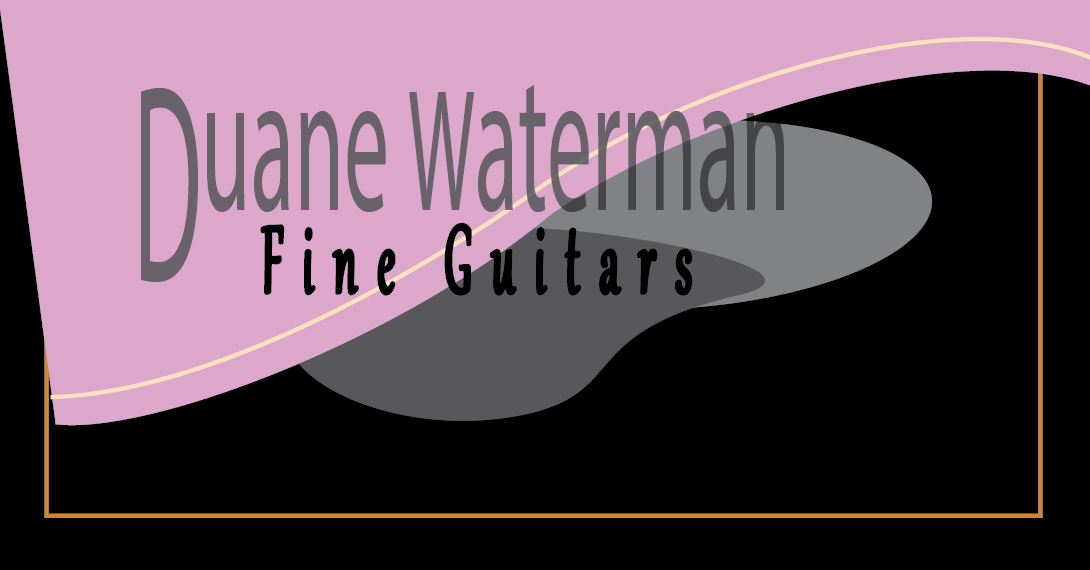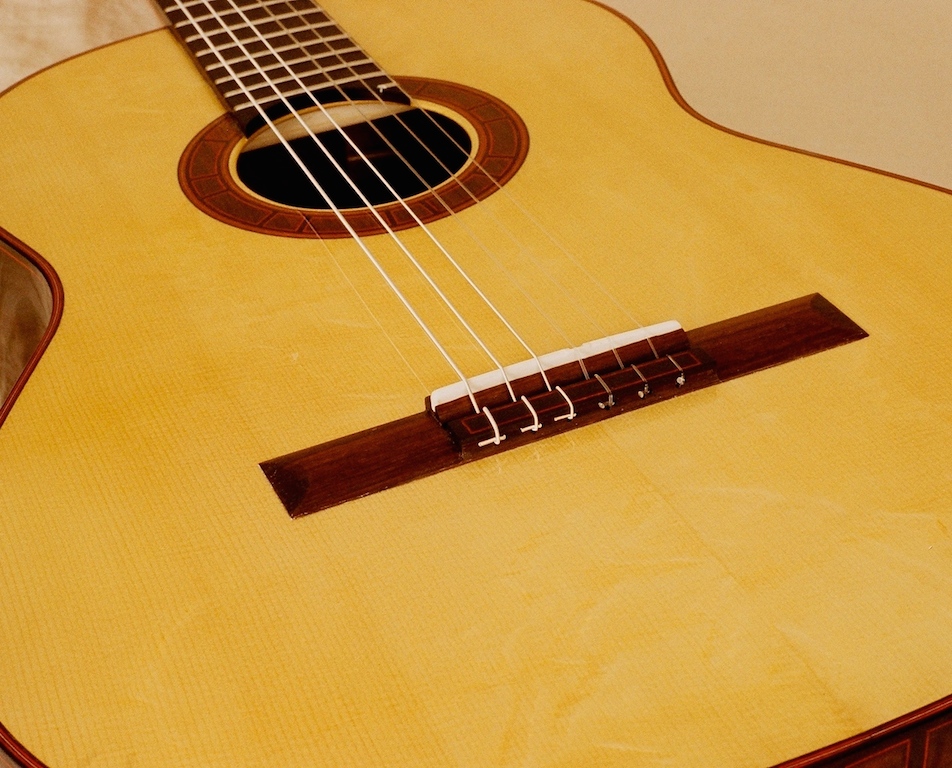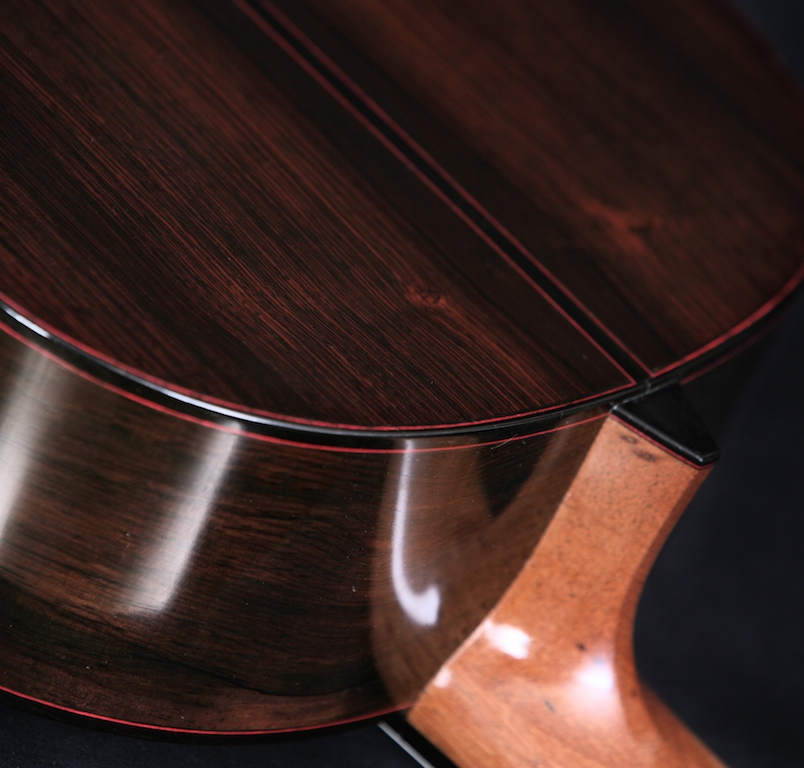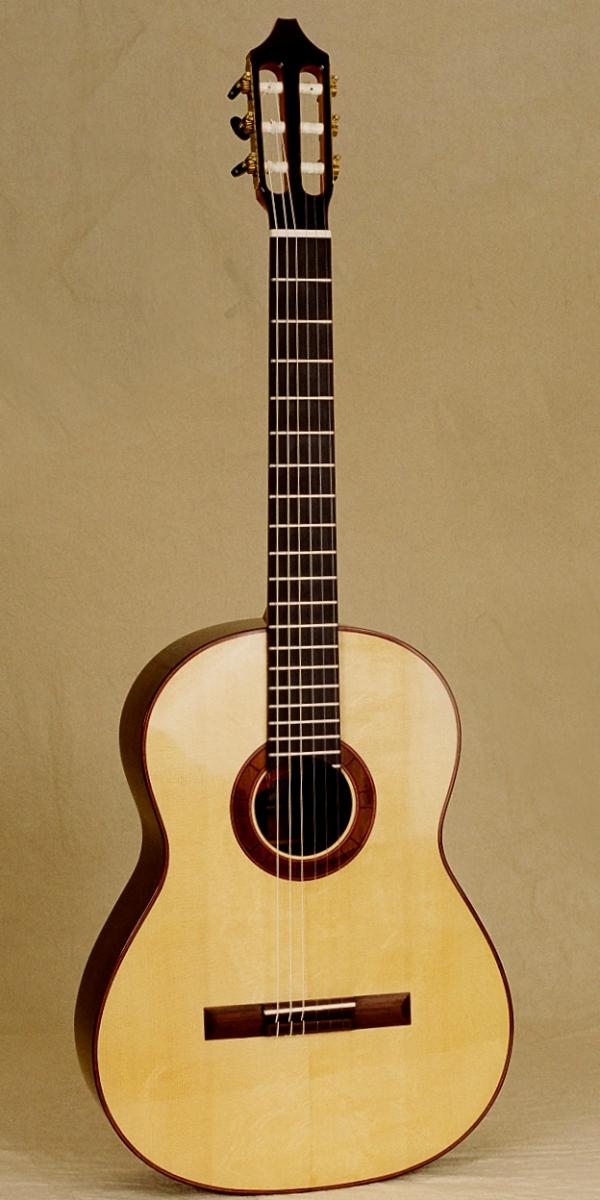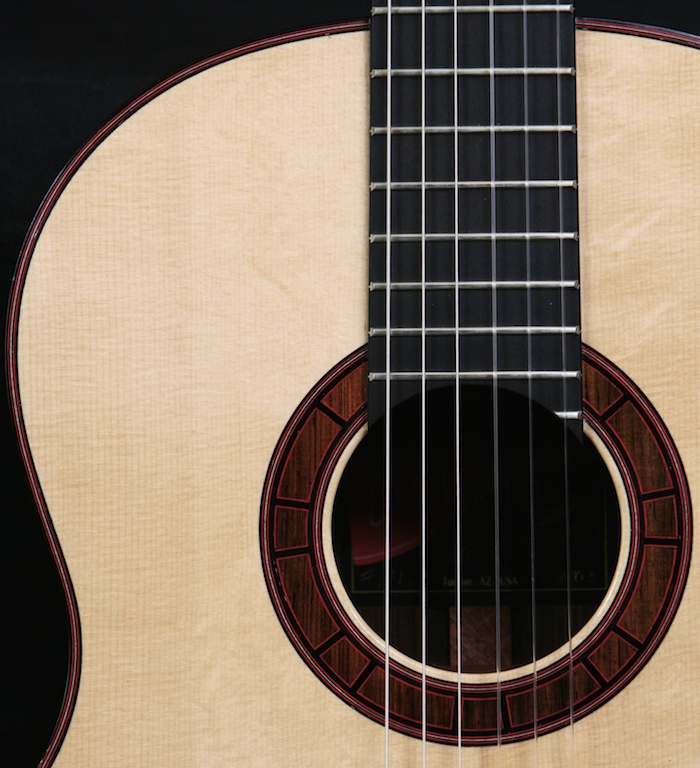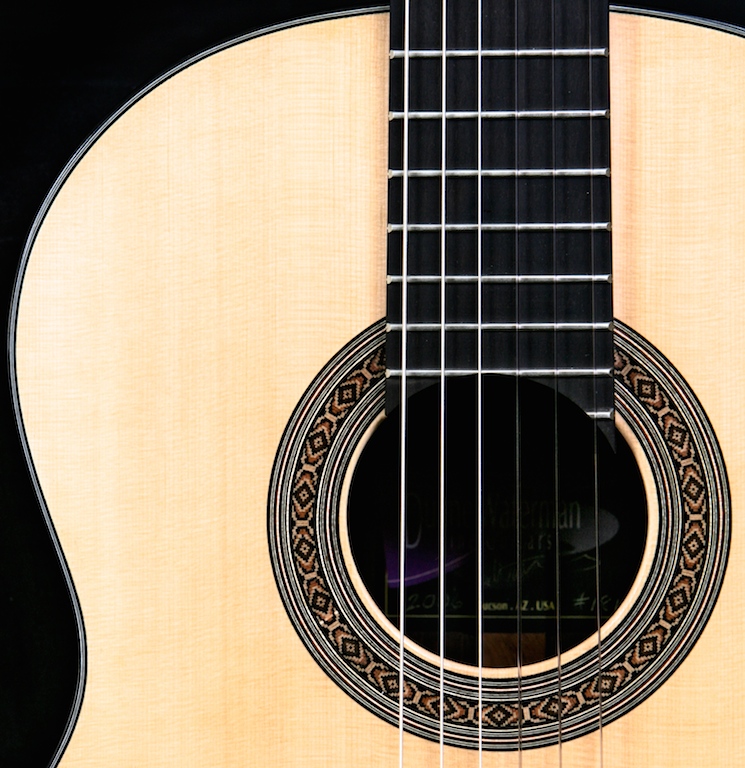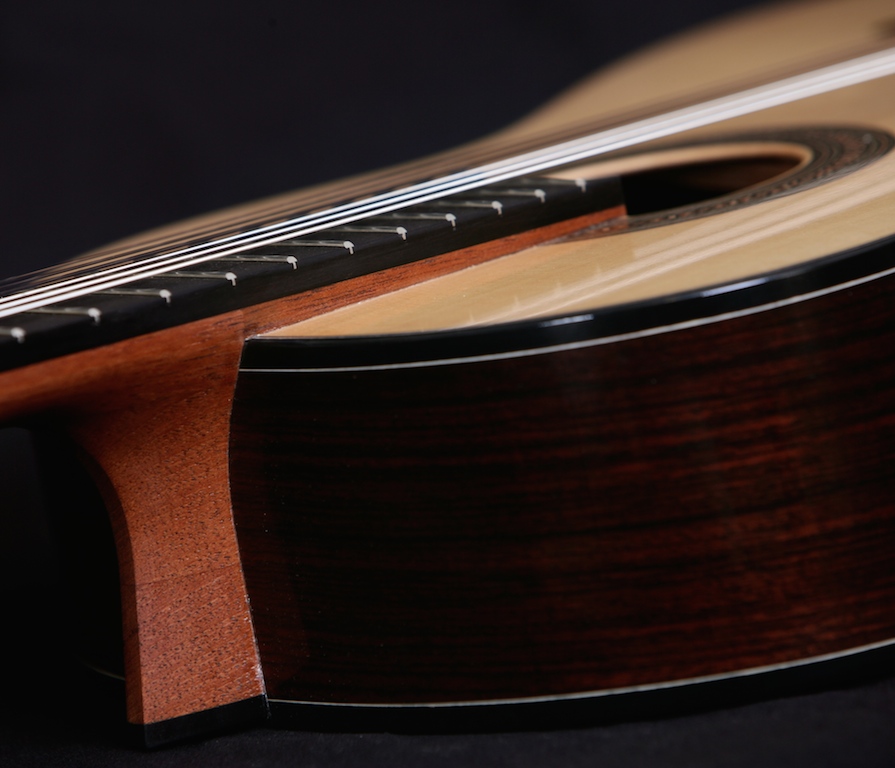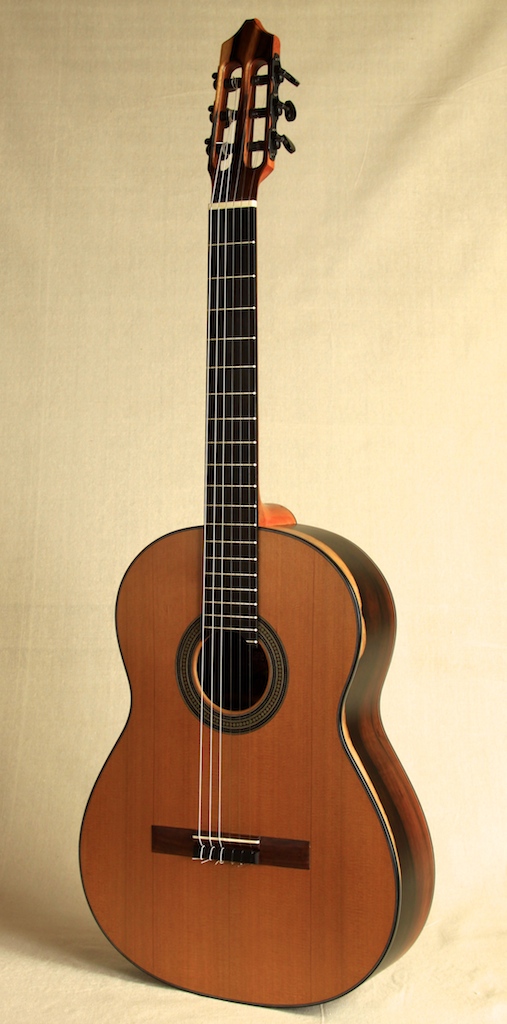Classical Guitars
|
To me, classical guitars are the Formula 1 of guitar types. The preferred compositions - historic and current, the technical discipline needed for acceptable performance, and the concert instruments themselves are highly refined. There are guitar makers that focus tightly on re-creating exact models of instruments from earlier periods - similar to the work of violin makers - but many others today are working to evolve the instrument with new materials, forms of construction and more modern features - like elevated fingerboards and side sound ports. The concert guitar is certainly not a "finished" item. Like many of my contemporaries in the 20th century I began by making instruments that adhered closely to Torres - and Hauser l - with spruce tops and 7 symmetrical fan braces. After finishing about 50 of these instruments over 6 years I started making slightly larger, cedar models influenced by the Jose Ramirez and Miguel Rodriguez concert models. These were more successful guitars for me - appealing to a broader range of players. In the last 20 years or so the revolutionary work of Greg Smallman (lattice style construction), Mattias Dammann (Double tops), and Schneider/Kasha (Radial bracing and a modern aesthetic) has influenced my building to varying degrees, as it has with many other makers around the world. |
Currently I make two general models: One, I call the Concert Classical. These are distinguishable by a center sound hole, like all traditional guitars. These are designed in a variety of cosmetic motifs - from mosaic rosettes with simple, yet elegant black/white trims to more elaborate, modern rosettes with distinctive colors that also match the body edge trims. Several are illustrated here on this page with photos and video/soundclips.

